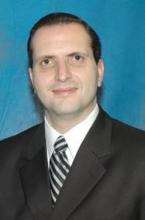TORONTO – In the United States, fewer than one in five coronary artery bypass graft surgeries are done without cardiopulmonary bypass, according to a large Society of Thoracic Surgeons database study conducted by Dr. Faisal G. Bakaeen of Baylor College of Medicine, the Michael E. DeBakey VA Medical Center, and the Texas Heart Institute, Houston, and colleagues.
As of 2012, 84% of the centers in the United States were doing either 0 or fewer than 50 off-pump cases per year. Among U.S. surgeons, 86% did either no off-pump coronary artery bypass grafts (CABG) or 20 or fewer cases per year.
"We speculate that this decline is because off-pump is technically a more demanding operation than on-pump," said Dr. Bakaeen during his presentation at the annual meeting of the American Association of Thoracic Surgery.
"There are [also] concerns about graft patency and the completeness of revascularization and randomized, controlled trials have shown no mortality or major – and I emphasize major – morbidity benefit."
The invited discussant for the abstract, Dr. Harold L. Lazar, the director of cardiothoracic surgery research at Boston Medical Center, suggested that off-pump CABG numbers "will continue to decline" as overall CABG volume continues to decline, and as higher-volume centers and surgeons opt to do fewer off-pump cases.
"Cardiac surgeons have always been motivated to adopt new techniques that will result in improved outcomes for their patients," said Dr. Lazar. "The continuing decline in the use of OP-CABG [off-pump CABG ] by U.S. surgeons is an indication that OP-CABG is not this type of technique."
Introduced in the early 1990s, off-pump CABG was initially touted as a means of avoiding several of the adverse effects of cardiopulmonary bypass and aortic manipulation. However, the relative benefits of off-pump as compared to on-pump CABG continue to be hotly debated.
Dr. Bakaeen and colleagues used the Society of Thoracic Surgeons Adult Cardiac Surgery Database to examine national trends in the use of off- versus on-pump CABG, looking specifically at volume-specific trends among centers and surgeons.
"This is a megadatabase with a huge number of patients, over 2.1 million patients and over 1,200 centers," said Dr. Bakaeen.
The off-pump and on-pump CABG percentages were calculated in aggregate, by center, and by surgeon for a total of 2,137,841 isolated primary CABG procedures performed between Jan. 1, 1997 and Sept. 30, 2012.
Based on 2007/2008 yearly off-pump volume, the analysis subgroups were "high" [center number greater than 200 cases, surgeon number greater than 100 cases], "intermediate" [center number equals 50-200, surgeon number equals 20-100], and "low" [center number less than 50, surgeon number less than 20].
The utilization of off-pump peaked in 2002 at about 23% but then decreased to 17% in 2012. Most of this decrease was found to be driven by higher-volume centers and higher-volume surgeons doing fewer off-pump cases.
Indeed, for the most recent years studied (2011-2012), 12% of U.S. centers (1,056) and 34% of U.S. surgeons (2,626) did not do any off-pump CABG cases.
Another 72% of centers and 52% of surgeons were low-volume operators (less than 50 cases/year and less than 20 cases/year, respectively.
Only 1% of centers (150) and 1% of surgeons (38) were classified as high-volume off-pump operators.
Of note, while the overall conversion rate – cases that were started as on- or off-pump and switched midprocedure – has remained fairly steady at 6%, the rate of unplanned conversions has risen from a low of about 1% in 2004 to about 3.2% in 2012.
"What was interesting was that there was a direct correlation between off-pump volume and the experience of the surgeon and the conversion rate," reported Dr. Bakaeen.
"So, if you are a higher-volume, experienced off-pump surgeon, you are three times less likely to convert than a low-volume surgeon [P less than .01]."
Dr. Bakaeen concluded that, "off-pump CABG utilization will likely continue to be concentrated in specialized centers and performed by dedicated off-pump surgeons."
Dr. Lazar added: "No operation that can only be performed by a select group of experienced, talented surgeons has ever achieved the test of time. CABG surgery must be performed expertly under all circumstances in all patients and at all hospitals, regardless of cardiac volume. These goals appear to be best achieved with on-pump CABG, which remains the gold standard."
Dr. Bakaeen reported having no financial disclosures.
Dr. Lazar reported that he receives grants and research support from Eli Lilly.

